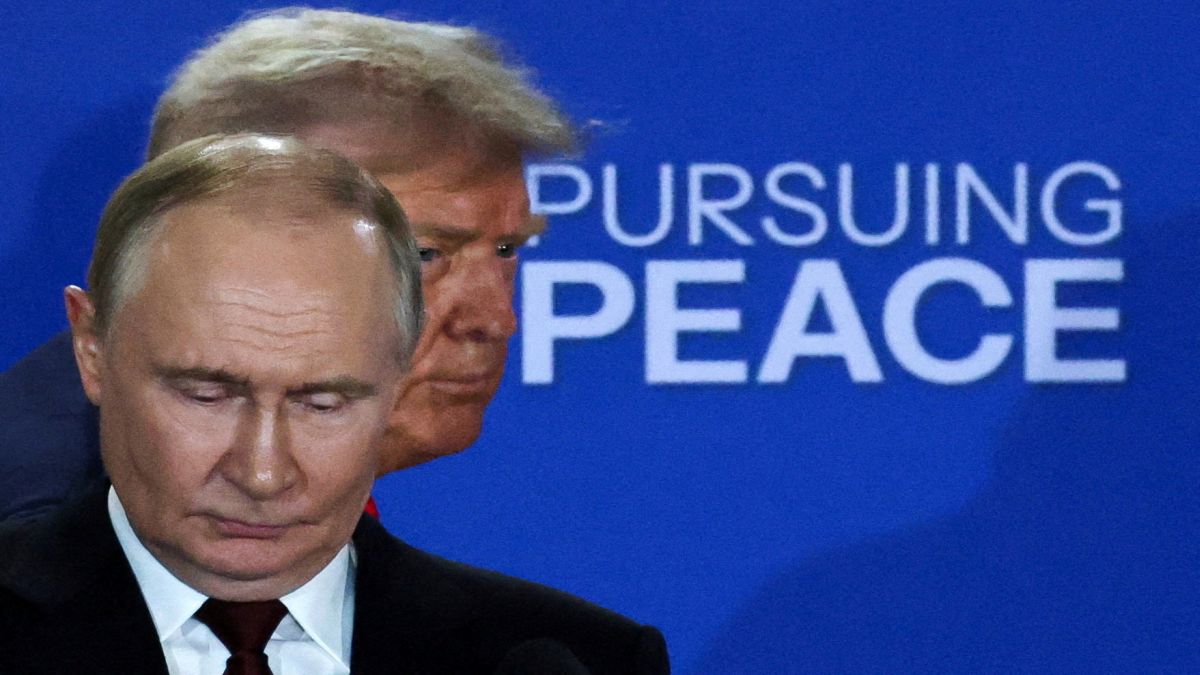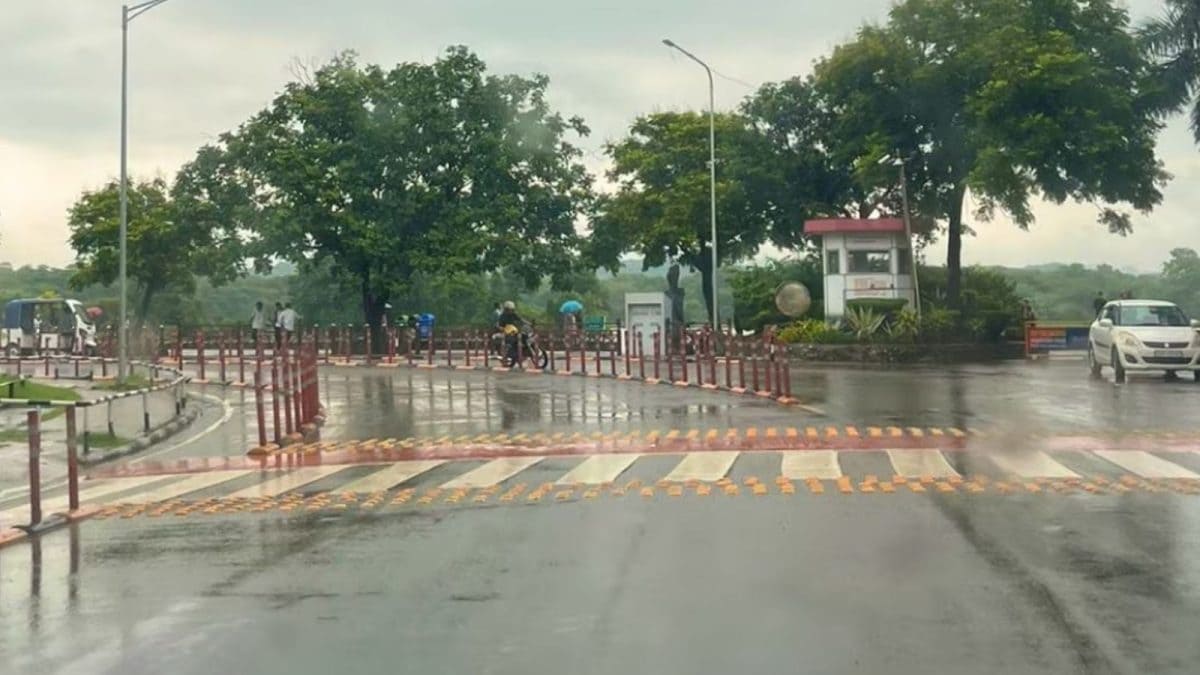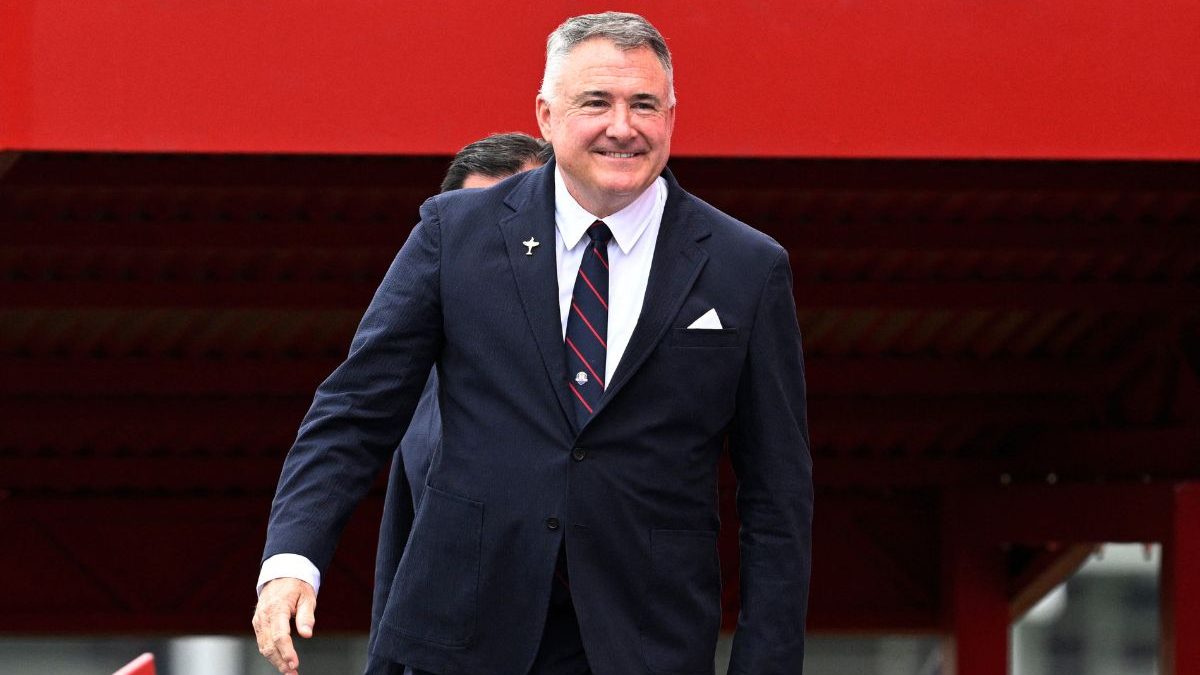In the span of just a few weeks, the ongoing Russia-Ukraine war has witnessed a dramatic turn of events. From US President Donald Trump’s latest U-turn from his old position to Russia’s latest incursion into the European airspace, the geopolitical dynamics between the nations are in a whirlwind.
After he met with Ukrainian President Volodymyr Zelenskyy on the sidelines of the United Nations General Assembly (UNGA), Trump came out in public and shared a dramatically different position on the war from the one he had been propagating even before he came back to the office.
In a post on his social media platform Truth Social, where he is known to share controversial takes on numerous issues, Trump said that Kyiv can “win all of Ukraine back in its original form”. The proclamation by the American leader marked a major shift in his position on the war. In the past, Trump has repeatedly expressed his desire to end the war. However, he had warned that the process would likely involve Ukraine giving up its territory, an outcome consistently rejected by Zelenskyy.
Trump did not stop there; he went on to call Russia a ‘paper tiger’, indicating ‘all is not well between’ Trump and his ‘old-mate’, Russian President Vladimir Putin. Trump’s change of heart also came at a time when several Nato members reported infiltration by Russian drones or fighter jets, an allegation that Russia attempted to brush under the rug.
In an exclusive conversation with Firstpost’s Bhagyasree Sengupta, Dr Hanna Shelest, the Security Studies programme director at Prism UA and the editor-in-chief of Ukraine Analytica, shared her take on the recent developments and delivered her assessment on what lies ahead for Ukraine, Nato, Russia and Trump.
Shift in Trump’s stance
While speaking to Firstpost, Shelest pointed out that Trump’s change in stance was not as sudden as the world is perceiving it to be. She recalled the Ukrainian delegation’s previous visit to Washington, DC, where they laid out the map of the battleground in front of Trump.
“It is difficult to say that it came all of a sudden because very intense work was done by the Ukrainian diplomats and the Ukrainian president himself,” Shelest averred.
“If you remember that almost a month ago, there was a meeting in the White House where Ukraine came with the map and the military commanders and clearly explained what was happening on the ground,”
She claimed that during the Alaska Summit, Putin attempted to paint a rosy picture of what the situation on the ground was. “The problem is that President Putin, since Alaska, tried to persuade the American side that they are winning and they can take just in one week the east of Ukraine, especially the Donbas region. But the situation on the ground was absolutely different, and Ukraine even started a counterattack at some places on the frontline,” she said.
“The US intelligence also presented this data to the White House, and after they finally received the full information and explanation of what was happening, President Trump was eager to state a new position that just demonstrated reality on the ground and not the narrative that the Russian president tried to persuade him,” Shelest told Firstpost.
Trump has been reliant on the map depicting the Russia-Ukraine war for a while. In August, Trump already had a map in the Oval Office, depicting the Russian occupation in eastern Ukraine. “I assume you’ve all seen the map,” Trump told Fox News on Tuesday.
“A big chunk of territory is taken, and that territory has been taken.”
Will Trump change his stance again?
Trump’s latest remarks sparked speculation over the overall dynamics between him and Putin. Shedding light on the equation between the two leaders, Shelest admitted that Putin had undermined the Potus’s trust. “President Trump hoped that they were friends, that they were individual nations and that Putin is the man with a sound mind, that he is pragmatic,” she said.
“All this mounted when Putin promised a lot but didn’t do anything, which indicated that he is not a trusted partner. Trump thinks that if you trust somebody, you already have the agreement even by words, then both sides will follow this, and when somebody tries to cheat him, that’s what he doesn’t like.”
“So will he change his position in the future? Yes, that is totally possible, and we are aware of this. But as for now, I would say that Putin did a lot by himself to undermine his position and trust the US side had and if the behaviour of his ministry of foreign affairs and of the top personalities in Russia will continue to be the same, meaning the violition of the agreements, not willing to negotiate and just provoke, things will not change,” the Ukrainian analyst told Firstpost.
It is important to point out that Russia’s initial response to all of this has been rather restrained. Soon after Trump’s remarks, Putin’s spokesman Dmitry Peskov gently brushed aside the “paper tiger” insult. “Russia’s in no way a tiger,” Peskov told a Russian radio station. “It’s more associated with a bear. And there is no such thing as a paper bear.”
Peskov also maintained that Trump is only hearing the Ukrainian side and that Russia would present its side soon. Soon after the exchange of words between the two nations, US Secretary of State Marco Rubio sat down with his Russian counterpart Sergey Lavrov on the sidelines of the UNGA.
When asked if Moscow would be able to bring Trump back to their side, Shelest told Firstpost that the Trump administration is aware that Russia is not willing to end the war. “We have an expression that deeds speak louder than words, and we have already had the positions expressed publicly by the Russian delegation many times. First of all, the US side sees that they are not changing their position, they are not eager for compromises and negotiations,” she explained.
“The simple fact is that for the last two weeks, the Russian Federation have sent its drones, they have tried to undermine the security of the borders of the Nato countries, not only Ukraine. So there’s a clear understanding that just negotiations between Lavrov and Rubio would not be enough to change the perception.”
Is Trump trying to wash his hands of the war?
After Trump’s proclamation, The New York Times shared an assessment noting that the American leader is taking Biden’s approach to “wash his hands off the conflict”. Shelest had a different understanding; she pointed out that Trump’s stance on the matter changed because he now has a better understanding of how complex the war is.
“The President really hoped that he could end this war quickly, and he thought that his personal relations would help. He had this desire for these quick decisions. We have often heard: one call, 7 days, 2 weeks, 1 month. But now he came to the understanding of how complex this war is and how complex the reason for the war is,” she said.
“It is not about Nato, it is not about some weapons. It is about Russia’s colonial policies and the desire for the Ukrainian state to just stop existing. He understands the limits and complexities of the war. He is trying different variants now. He is trying different opportunities to push Russia into different negotiations. It is just the process that we will have to follow to see if he understands the best way to mediate it,” she said.
Why are India and China facing the wrath?
One such variant approach of Trump is to target Russia’s biggest trade partners, India and China. While Trump has been threatening secondary sanctions on both nations for a while, he has already imposed nearly 50 per cent tariffs on Indian goods.
Not only this, but Trump’s trade representative, Peter Navarro, made several provocative remarks after the tariffs were imposed. He eventually went on to describe the Russia-Ukraine war as “ Modi War”.
When asked if such scrutiny is warranted, Shelest said: “It is a very difficult question regarding the secondary sanctions, but at the same time, let’s be honest: Russia is still able to conduct this war only because it can sell oil abroad. That is the main income that allows them to have this war and produce weapons.”
“Other spheres of the economy are not working in the Russian Federation. Their economy is in decline. So when Russia can bypass sanctions or when they can send a lot of energy resources abroad, it means that they have the budget to target Ukrainian civilian infrastructure to destroy Ukrainian residential areas and just to conduct a war.”
“There were three years during which it was possible to diversify energy resources or to have a different level of relations with Russia. However, India and China preferred to continue this cooperation with Russia,” she averred. Shelest noted that despite all these challenges, Ukraine maintains good ties with India.
“Is it that harsh? That’s another question. But it is the position of the American president; it is not something Ukraine can decide. It is not a reason to stop buying Russian energy. It is the press to stop Russia from finishing this war and aggression as soon as possible,” she told Firstpost.
Zelenskyy’s address at the UNGA
Shelest maintained that Zelenskyy’s speech at the UNGA accurately reflected the current position of the war-torn nation. “On the one hand, it is to be a responsible member of the international community; the charter and the efficiency of this organisation are very dear to our hearts. But at the same time as the founder member, we can be critical of a lot of issues that are happening around because we clearly understand that the organisation is as effective as the members are allowed to be,” she said.
“That’s why Ukraine needed to balance between caring about the principles and the role of the United Nations, but at the same time openly speaking about the problems we currently have in this world, where the UN has appeared to be less effective. It is always a big hope that the United Nations is the organisation to prevent this war.”
In his UNGA address, Zelenskyy maintained that the world is in “the most destructive arms race in human history”. When asked if such remarks push the country away from a peace agreement, the Ukrainian analyst made it clear that Kyiv is “absolutely ready for a peace agreement”.
“So the current situation is that all countries understand, unfortunately, that just by diplomacy, we cannot protect our territorial sovereignty. There are always bigger countries to undermine your security,” Shelest said.
“We know that the bad guys are creating a coalition. We already saw Iran, Russia and North Korea. We already saw the statements and the Chinese involvement in the last six months, which is growing, and China supports Russia in their military and the war.”
“So because of all this, we would like to focus and stress to the international community that it is not only the question of production, it is the question that now we will see more and more countries buying weapons because they would like to defend themselves. They would like to be ready for any type of aggression, and that is dangerous,” she explained.
“I would say that peace processes and peace negotiations are possible when both sides would like it. But if Russia doesn’t, definitely Ukraine will speak about the arms production to defend our people,” she furthered.
On recent Russian incursions
Recently, several Nato member nations reported infiltration by Russian drones and jets. The latest development prompted Poland and Estonia to invoke Article 4 of the Western alliance, reflecting how tensions have reached a boiling point in Europe.
When asked about the latest development on the continent, Shelest told Firstpost that “the Russian incursion into the Nato member state is a dangerous process, but it is not the first time that Russia has done it.”
“We already have numerous incidents with the Russian drones entering Polish and Romanian airspace. But those were individual cases, and each time these countries were able to say that because they did not want to provoke or escalate the situation, so they always emphasised that most probably they were not the target, they were not aimed at, and it was just an accident.”
“But when 20 drones enter the airspace, you cannot say that it is by accident, you clearly understand that it is a provocation, especially when it is coming on the same week as the aeroplanes as the Russian jets are crossing the line on the other Nato member states, like near the Baltic,” she averred.
The Ukrainian expert maintained that Russia has now decided to raise the stakes. “They are provoking because they would like to see the reaction of the Nato member states. They would like to see whether they are united or not. They would like to see the reaction of Washington, whether they will protect small states and also one very practical reason is that they would like to test European defence and to see how strong and capable it is to intercept the Russian missiles and Russian drones,” she told Firstpost.
When asked, Putin is taking these measures because he has lost Trump as an audience, Dr Shelest maintained that the Russian leader wants to see if Trump would support European allies. “Putin would like to demonstrate that he is still strong, that he is in control of the situation, and he would like to stress that Trump and the European coalition should think more about their own security rather than about the security of Ukraine,” Shelest told Firstpost.
“He needs these countries to stop delivering weapons and air defence systems to Ukraine. So he needs to create the perception of fear in the European countries so they will be busy with their own security situation. He is not successful in this because of two reasons:
-
European countries understand that Ukraine has the best experience of air defence from the drones, so they are coming to Ukraine to learn our experience. The Polish delegation was recently here.
-
At the same time, they understand that it is the joint European airspace, and we would have to develop joint European projects now, like with Ukraine and EU & Nato countries, if we want to be efficient in these interceptions,” Shelest explained.
So is the Ukraine war on the verge of a spill-over?
Shelest disagrees with such an assertion. “Russia definitely would like to provoke European countries. They have been doing it for a long time. They have already conducted plenty of hybrid operations. They intensified espionage in the European countries. They intervened in social networks and elections in several countries, like what happened in Romania and in the latest elections,” she said.
“They intervened in the movements and protests in several countries. Violation of airspace has happened before, but they were more careful. Now they are trying to be more aggressive with this. But I would like to say that these are just provocations. The reason is that their capabilities are less than those of Nato. We see that Nato, for the last several years, have created several groups to help Eastern European nations.”
“Will we have more provocations? Yes, we will because Russia needs European countries to care about themselves and not Ukraine, but at the same time, I don’t think that we are on the edge of a full-fledged war just because Russia does not have the capacity or money to go to war,” she asserted.
On Moldovan elections and what lies ahead for Europe
Amid the chaos, Ukraine’s neighbouring nation, Moldova, went to the polls. In the intense parliamentary elections, the pro-European party of Moldovan President Maia Sandu won a new majority.
Before the results were announced, Shelest recalled the struggles the Eastern European nation has faced over the years. “Moldova is an EU candidate together with Ukraine, so we coordinate all of our policies. Let’s remember that Moldova has been the target of Russian interference since the day of its independence. The Transnistria region, which is de facto occupied by Russia and where the Russian forces are stationed, has been a problem for Moldova for decades,” she said.
“So that’s why current interference in this election is nothing new. It’s just that Russia is spending more and more money. Because they understood that buying politicians didn’t work. Moldova still works with the EU because it is best for its economy and security.”
“It is the total corruption during the election. Russia is trying to buy voters; they are trying to buy fighters because they understand politically that Moldova is not interested anymore. So that is why they are using all corrupt methods,” she furthered.
‘Europe knows the consequences of a world war more than anyone’
Shelest concluded her assessment by insisting that no one knows the implications of a World War better than Europe. “We saw that last year, most of these countries were resolute regarding their security, weapon supply, and production of weapons. But if we look at the latest decisions of the EU, they have created a new commissioner for the military industry. They created a special fund that will sponsor the military research development and joint production for the European countries. So the fact is that they are preparing,” she said.
“They finally understood that the best way to prevent war is to be ready for it. That’s why we see diplomatic rhetoric that we would like peace and restoration, but the military is preparing and industry is preparing to be ready with technical means, munitions, and ammunition,” she explained. As the tensions continue to escalate on the continent, it will be interesting to see which way the raging war is currently heading.
End of Article

)

)